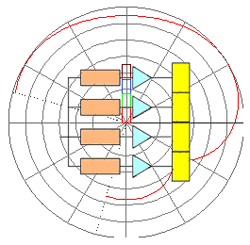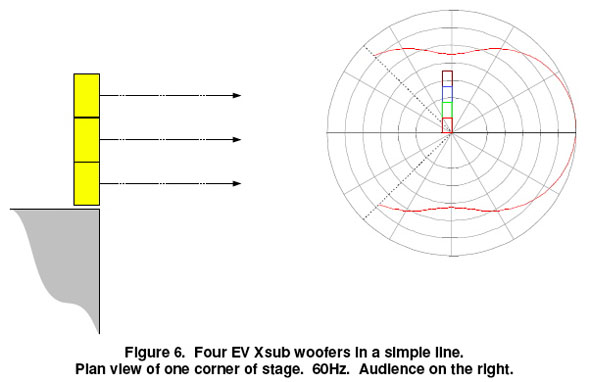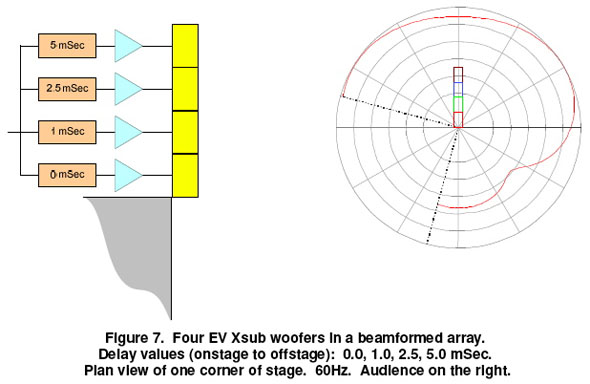
Beamforming
Beamforming is a technique by which the sound wave emitted by a large array can be aimed and shaped. In a beamformed array, the loudspeakers are driven separately (or in small groups), and each drive signal has its own delay and level.
Figure 6 and Figure 7 illustrate a typical effect of beamforming on a typical medium-sized subwoofer array. The illustrated array is four EV Xsub subwoofers. Figure 6 shows the array with no beamforming. In Figure 7, the delay values are chosen to direct the bass radiation offstage. This is a typical technique for increasing side coverage.
Beamforming only works on arrays that are large (as defined above). Controlling directivity of small arrays requires gradient techniques, which will be addressed in my next installment of this article.
Gain Shading
The term “shading” means modifying array drive parameters for the elements on or near the ends of the array. “Gain shading” means adjusting—specifically, reducing—the drive gain for one or more elements at either end of an array.
For long arrays, shading takes the form of a gradual tapering of gain from 0 dB to about -6 dB over the last two or three elements at each end. The effect of the shading is to make the coverage pattern more regular and less frequency-dependent.
Next time, I’ll be discussing various woofer array types and applications.
NOTE: The polar patterns illustrated in this document have all been produced by the Electro-Voice LAPS 2.2A line array design program. Starting with release 2.2A, LAPS includes a subbass pattern modeling page.
Jeff Berryman served as the director of Jasonaudio, a touring sound company based in Canada, and is a senior scientist with Electro-Voice.
Related Articles by Jeff Berryman:
What Really Defines Good Bass In Sound Reinforcement?
Discussion & Analysis Of A Variety Of Bass Coverage Patterns


